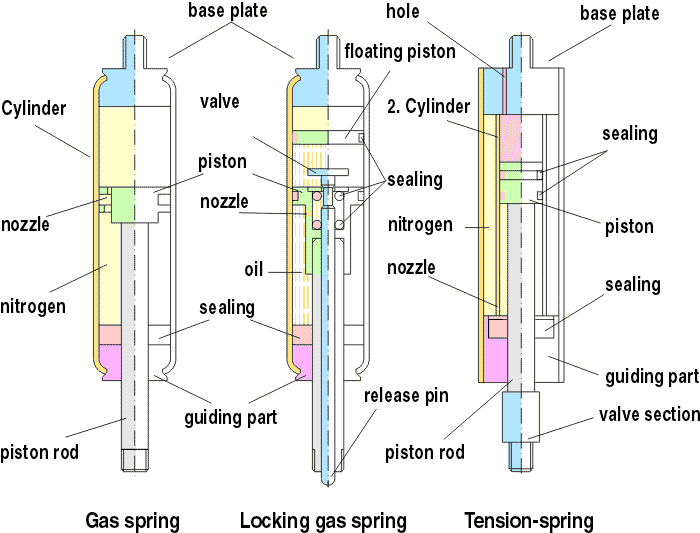 |
• Home |
| • Contact |
| • Components and Function |
| • Order Example |
| • Gas Springs |
| • Locking Springs |
| • Tension Springs |
| • Dampers |
| • Special Locking Springs |
| • Extras |
| • Brackets |
| • Special Fittings |
| • Usage Instructions |
| • Applications |


The gas spring is a closed, maintenance-free storage of energy comprising of piston rod, piston, cylinder, guide, sealing and a base plate.
The pressure inside the cylinder (medium nitrogen, a maximum of 160 bar unloaded) is applied on the piston rod's cross-section and thus results in the extension force (F = P*A).
On the tension spring, the area between the piston rod and the cylinder's inside diameter is pertinent.
The unloaded piston rod on a gas spring is always extended, on a tension spring compressed.
By compression (gas spring) extension (tension spring) of the piston rod the volume inside the cylinder is decreased and the gas compressed.
The resulting progression depends on the piston rod's and cylinder's diameter.
The gas spring contains an oil level for lubrication and end damping reasons.
Further information on characteristics, tolerances and applications can be found on the "Usage Instruction" leaflet.